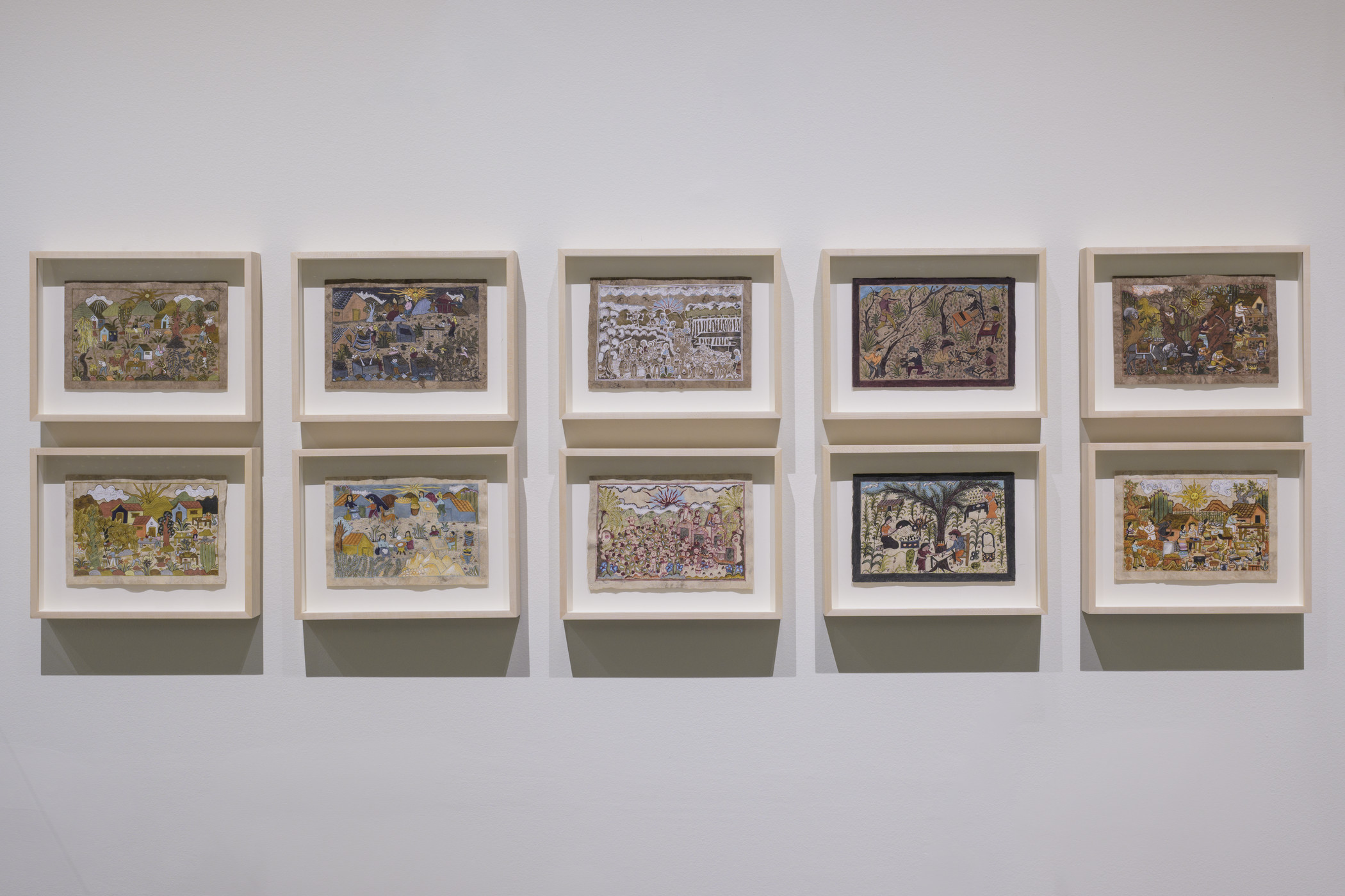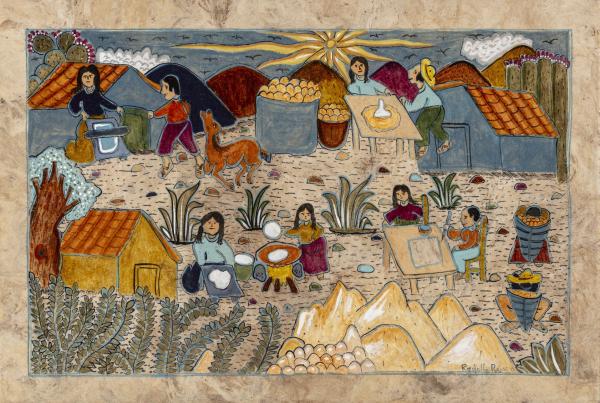Amid the Spanish invasion of the Americas, a school of Indigenous historians set out to preserve the knowledge of their people, producing an illustrated 16th-century encyclopedia known today as the Florentine Codex. Within this ambitious record of knowledge, the artists employed vibrant paints made of pigments engineered from the natural world around them, using materials like flowers, wood, minerals, and insects to produce vivid colors.
“It’s ancient knowledge we inherited, but we didn’t maintain everything there was to know,” says artist Gisela Martínez Morales.
For over a year, Tatiana Falcón, artist and researcher at Mexico's National Autonomous University, led a series of LACMA-sponsored workshops in the village of Xalitla, Guerrero, Mexico, teaching the village’s Nahua community of amate (bark paper) painters how to produce pigments from natural materials like matlali (blue dayflower) and xochipalli (orange cosmos). These traditional techniques are a blend of history, science, and art.
“We’re giving new meaning to those colors and we’re bringing this form of painting back,” says Falcón.

The documentary Harvesting Color: Ancestral Recipes for Today’s World follows Marina Martínez Pedro, Eva Pérez Martínez, Jesús Lozano Paredes, Alfonso Nava Larios, Gisela Martínez Morales, and Rodolfo Rojas Bello, a group of artists from Xalitla as they reconnect with these ancestral recipes and their cultural inheritance, and revitalize the manufacture and use of natural pigments in their painting practice through these workshops. The film was written and directed by Alexa Oona Schulz.
Harvesting Color, produced in collaboration with the Institute of Aesthetic Research of the National Autonomous University of Mexico (UNAM), is currently on view in the exhibition We Live in Painting: The Nature of Color in Mesoamerican Art, which explores the science, art, and cosmology of color in Mesoamerica, following histories of colonialism and industrialization that have minimized the deep significance of color in the Indigenous Americas. You can also watch the full film below. Inspired by the colors in the Florentine Codex, LACMA commissioned paintings from each artist to record Indigenous Nahua knowledge today, which are also on view in the exhibition.
We Live in Painting: The Nature of Color in Mesoamerican Art is on view in the Resnick Pavilion through September 1, 2025.



